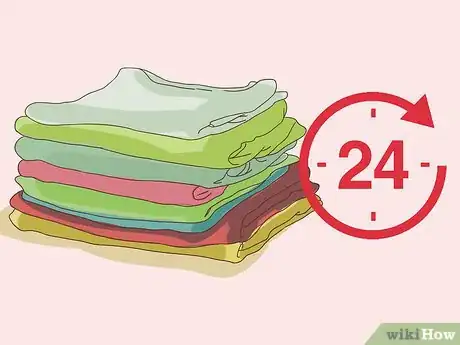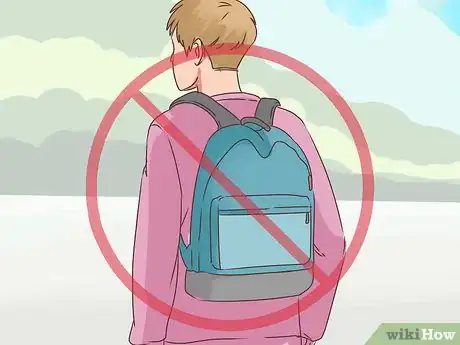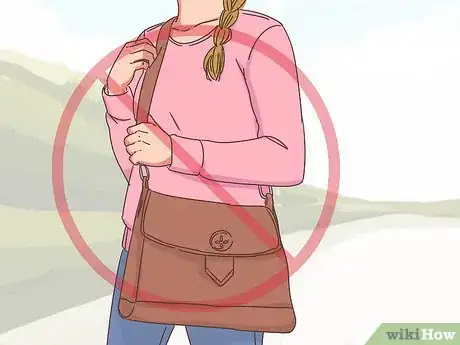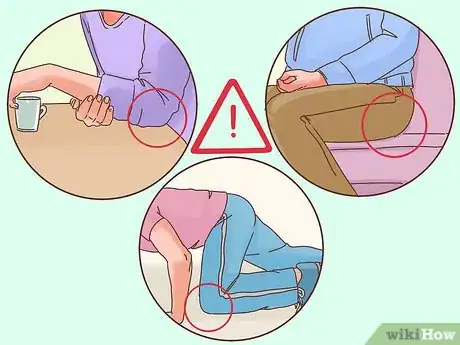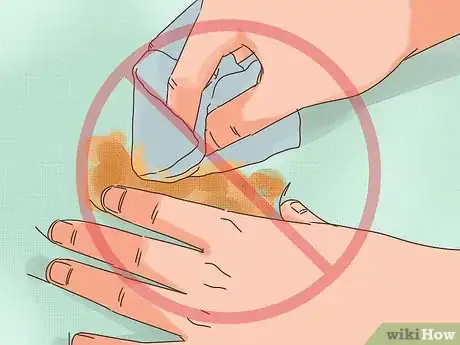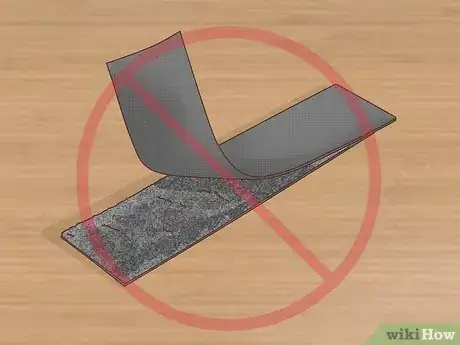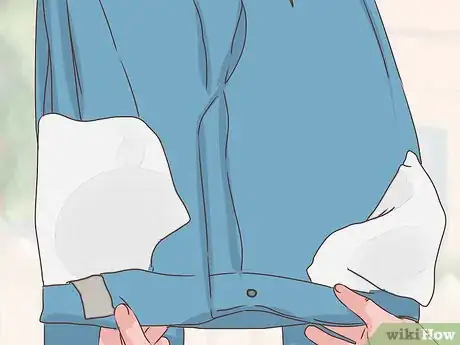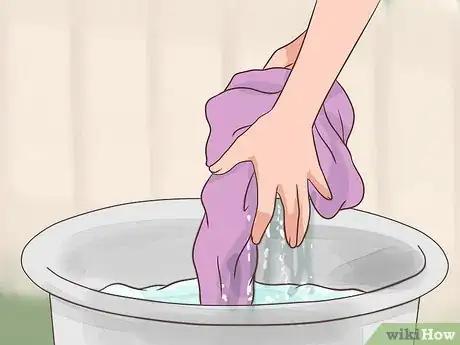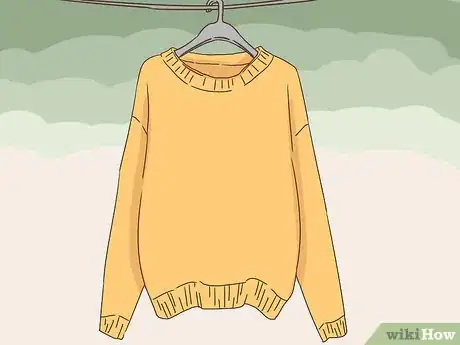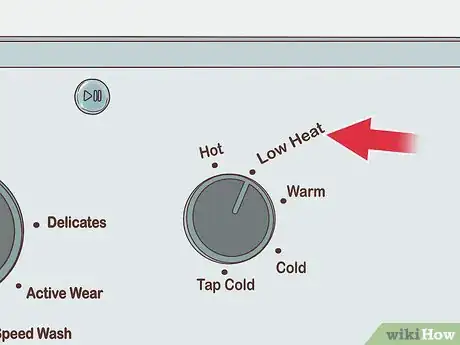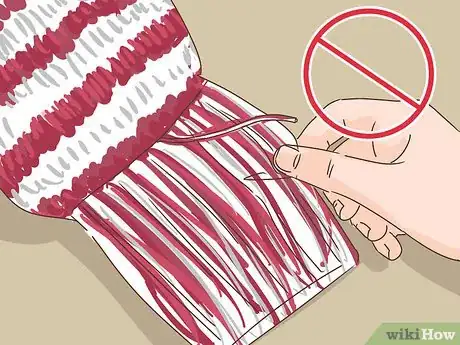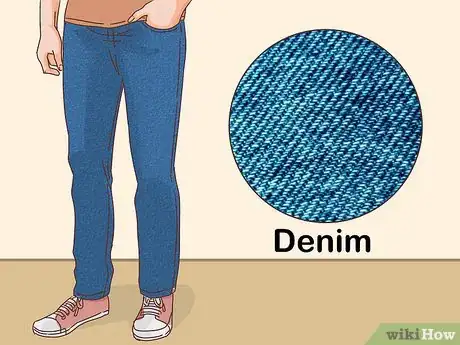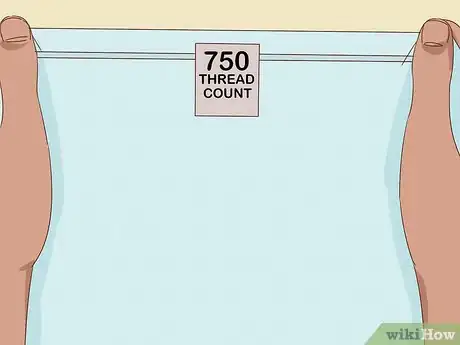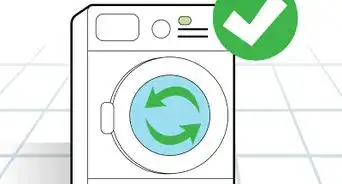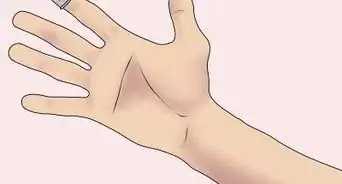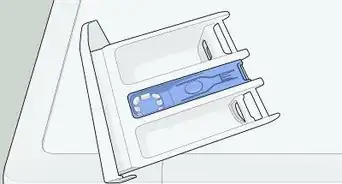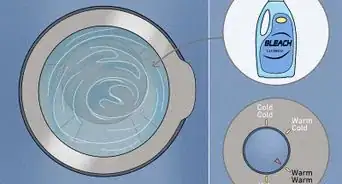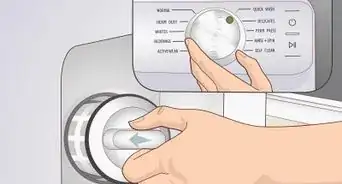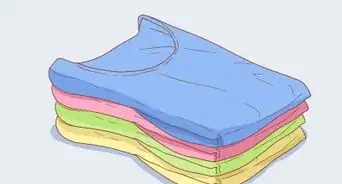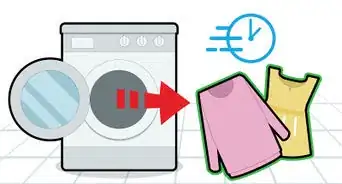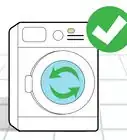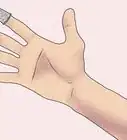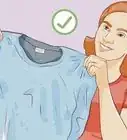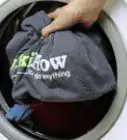This article was co-authored by Rani Gorgis. Rani Gorgis is a Laundry and Cleaning Specialist and the Owner of Park Blvd Laundry & Dry Cleaners in San Diego, California. With several years of experience in the laundry and cleaning industry, Rani specializes in dry cleaning, wash-n-fold, shirt laundry, and servicing smoke-damaged clothes. He holds a BS in Accounting and a CPA certification.
There are 8 references cited in this article, which can be found at the bottom of the page.
This article has been viewed 275,865 times.
Pilling, which describes small balls of fiber on a fabric, is something that can happen to almost any material. Pills form when short fibers in a material come loose, get tangled, and form tiny balls of yarn at the end of the fiber. The main cause of pilling is rubbing, which occurs most often during wear and in the wash. There are things you can do to prevent a fabric from pilling, but if you find that many of your garments pill, you can focus on materials that are less likely to have this problem.
Steps
Avoiding Pills During Wear
-
1Rest garments between wears. Excessive wear can cause pilling, especially if the garment doesn't have time to rest in between. To prevent this from happening, give clothes at least 24 hours to rest and return to their original shapes before putting them on again. This includes sweaters, shirts, pajamas, and other garments.
- Wearing garments too often can cause pilling because when you wear an article of clothing, the fibers tend to stretch. This can cause the shorter threads in the yarns to come loose, and then they tangle and pill.[1]
-
2Don't carry backpacks. Backpacks cause pilling because they cause friction when you move. Anywhere that the backpack has contact with your clothes or body is likely to pill, such as the back, shoulders, and under the arms.[2]
- Instead of a backpack, use a handbag that you can carry, a suitcase, or a wheeled carry-on bag.
Advertisement -
3Don't carry purses on your shoulder. Purses can also cause friction and pilling, especially in the shoulder area. When you carry a purse, carry it in your hand instead of on your shoulder if you're worried about pilling.
- Over-the-shoulder bags, messenger bags, and other accessories that you wear against your body can all cause pilling too.[3]
-
4Limit friction. Fabrics that tend to pill should never be rubbed against each other, other fabrics, or other materials. There are a number of actions that can cause rubbing and friction, and all of them should be avoided, including:
- Resting elbows against a table when you're working or eating
- Sliding around on the floor (can cause pilling on socks or the seat of your pants)
- Crawling on your knees when you're wearing pants
- Sitting on rough surfaces
-
5Don't rub stains. Many times, the first reaction upon finding a stain is to squirt some stain remover on it and rub the fabric together until the stain disappears. But this is another instance of rubbing that can cause pilling, and it should be avoided.
- To treat stains on fabrics that pill, place the stained fabric on top of an old towel or clean rag. Apply a stain remover of your choice, and then blot the area with a clean towel. The stain will transfer to the towel below without causing friction.
-
6Keep fabrics away from Velcro. Velcro is very sticky, and it can attach itself to the yarns in clothes and other fabrics. When this happens, the Velcro can pull shorter threads loose, and then they're at risk of pilling.[4]
- If you have clothes with Velcro on them, always keep the Velcro tabs closed, especially when you wash the garment.
Laundering Clothes to Avoid Pilling
-
1Turn items inside out before washing. The swishing motion inside a washing machine causes garments and fabrics to rub against each other, and this leads to pilling. To prevent unsightly pilling on the outside of garments, turn them inside out before throwing them into the washing machine and before handwashing.[5] [6]
- Pills may still form if the garments are inside out, but they will be on the inside of the garment, so they won't be visible.
- To prevent pilling on the inside and outside of the garment, place pill-prone items into a garment bag before washing.
-
2Hand wash pill-prone items. An alternative to the delicate cycle is hand washing, which may be best for items that are very pill-prone.[7] Wash items one at a time. To hand wash clothes and other materials:
- Fill a sink or bucket with water that's the right temperature for the fabric
- Add detergent and agitate the water to create suds
- Soak the item for at least five minutes
- Swish the item around in the water, but do not rub the material together
- Remove the item from the sink and squeeze out excess water
-
3Use liquid detergent with enzymes. Enzyme-based cleaners and detergents break down organic matter such as grass and blood stains, and they also break down proteins and sugars found in natural fibers. When you wash clothes in these detergents, the enzymes dissolve the small weak fibers that pills might form on.
- When looking for enzyme detergents, look for ingredients like cellulase, amylase, pectinase, and protease, which break down sugars and carbohydrates, proteins, and other molecules.[8]
- Powder detergents can be abrasive. Liquid detergents will cause less rubbing, and reduce pilling that occurs in the wash.[9]
-
4Use the delicate cycle. The delicate or hand wash cycle on a washing machine will create less rubbing, and this will help to prevent pills. The delicate cycle uses less agitation and a slower spin cycle, both of which mean less friction in the wash.[10]
-
5Hang laundry to dry. The dryer is another place where clothes and fabrics tumble around rubbing against each other, so drying clothes in the dryer can cause pilling as well. Instead, hang clothes, bedsheets, and other laundry items to air dry.[11]
- During the warmer months, hang clothes on an outdoor line for the fastest drying time.
- In winter, you can hang clothes to dry inside, but keep a window slightly open and the room well ventilated to avoid moisture buildup in the air.
-
6Use a low heat setting if you have to use the dryer. Sometimes it's necessary to tumble dry pill-prone items. When you find yourself in that situation, set the dryer to a lower heat setting. This will prevent shrinking and minimize stress on the fibers.
- Remove items as soon as they're dry to reduce the amount of friction the items are exposed to.[12]
Buying Fabrics That Won't Pill
-
1Steer clear of the worst offenders. Any fabric can pill, but there are some fabrics that are more prone to developing pills than others. If you find you're often battling with pilled garments, avoid fabrics that pill the most:
- Synthetic materials tend to pill more often than those made from natural fibers. Synthetics that are known to pill include polyester, acrylic, and nylon.[13]
- Blended materials that are made of both synthetic and natural fibers are also prone to pilling.
- Wool is one of the natural fibers that is known to pill.
-
2Opt for fabrics with tight weaves. The looser the weave or knit of a fabric, the more prone it will be to pilling. This is because loose fibers will move around more and rub against each other, leading to pilling. Loose-knit fabrics tend to be more pill-prone, while tightly woven fabrics will have the lease trouble with pills.
- The harder it is to see through a fabric, the tighter the weave is.
- Denim, for instance, has a very tight weave, and almost never pills.[14]
-
3Choose fabrics with higher thread counts. Some fabric items, such as bed sheets, is measured by thread count. Typically, the higher the thread count the better the quality, and the longer the threads will be. Longer threads mean less pilling, because there aren't any short threads to come loose, get tangled, and form pills.
- While garments aren't usually graded by thread count, the same holds true for higher-quality clothes with longer threads.
Expert Q&A
-
QuestionHow can I prevent pilling when I wash my clothes in the washing machine?
 Rani GorgisRani Gorgis is a Laundry and Cleaning Specialist and the Owner of Park Blvd Laundry & Dry Cleaners in San Diego, California. With several years of experience in the laundry and cleaning industry, Rani specializes in dry cleaning, wash-n-fold, shirt laundry, and servicing smoke-damaged clothes. He holds a BS in Accounting and a CPA certification.
Rani GorgisRani Gorgis is a Laundry and Cleaning Specialist and the Owner of Park Blvd Laundry & Dry Cleaners in San Diego, California. With several years of experience in the laundry and cleaning industry, Rani specializes in dry cleaning, wash-n-fold, shirt laundry, and servicing smoke-damaged clothes. He holds a BS in Accounting and a CPA certification.
Laundry & Cleaning Specialist Use a gentle detergent. Turn your clothes inside out before washing them. Dry your clothes on low heat and don’t forget to use dryer sheets. Also, don't overload the washer and dryer.
Use a gentle detergent. Turn your clothes inside out before washing them. Dry your clothes on low heat and don’t forget to use dryer sheets. Also, don't overload the washer and dryer. -
QuestionHow can I prevent an Alpaca wool sweater from pilling?
 Community AnswerYou have to wash it inside out a few times. The lint filter in your dryer will collect the extra lint.
Community AnswerYou have to wash it inside out a few times. The lint filter in your dryer will collect the extra lint. -
QuestionHow can you prevent pilling on the inside of your thighs while wearing yoga pants?
 Community AnswerWhen washing, turn the pants inside out.
Community AnswerWhen washing, turn the pants inside out.
Warnings
- Avoid electric shavers and pill removing devices, as these can be too aggressive and create holes in the material.⧼thumbs_response⧽
References
- ↑ https://www.wsj.com/articles/SB10001424052702304007504579348713465126696
- ↑ https://www.wsj.com/articles/SB10001424052702304007504579348713465126696
- ↑ https://www.wsj.com/articles/SB10001424052702304007504579348713465126696
- ↑ http://www.today.com/health/how-avoid-pilling-yoga-pants-6-athletic-wear-questions-answered-t33416
- ↑ http://www.goodhousekeeping.com/institute/a19518/tips-preventing-clothing-pilling/
- ↑ Rani Gorgis. Laundry & Cleaning Specialist. Expert Interview. 7 April 2021.
- ↑ http://www.today.com/style/pilling-preventable-how-avoid-those-annoying-fuzz-balls-t101329
- ↑ http://www.today.com/health/how-avoid-pilling-yoga-pants-6-athletic-wear-questions-answered-t33416
- ↑ http://www.shefinds.com/2016/once-and-for-all-how-to-prevent-clothes-from-pilling/
- ↑ http://www.mamaslaundrytalk.com/laundry-basics-how-to-choose-the-washing-cycle/
- ↑ http://www.shefinds.com/2016/once-and-for-all-how-to-prevent-clothes-from-pilling/
- ↑ http://www.collegefashion.net/college-life/laundry-tips-and-tricks-every-girl-should-know/
- ↑ http://www.goodhousekeeping.com/institute/a19518/tips-preventing-clothing-pilling/
- ↑ http://www.today.com/style/pilling-preventable-how-avoid-those-annoying-fuzz-balls-t101329
About This Article
To prevent pilling, avoid letting anything rub against the fabric, such as a backpack or shoulder bag, since the friction is what causes fibers to loosen and tangle. When you wash clothing, turn items inside out so that the fabric won’t pill on the outside from the swishing motion of the washing machine. Additionally, use a liquid detergent, since powder cleansers are more abrasive and break down fabric more easily. Finally, allow clothing to air dry so that the fabric doesn’t rub against itself in the dryer and cause more pilling. To learn how to choose fabrics that are less likely to pill with wear, read on!
